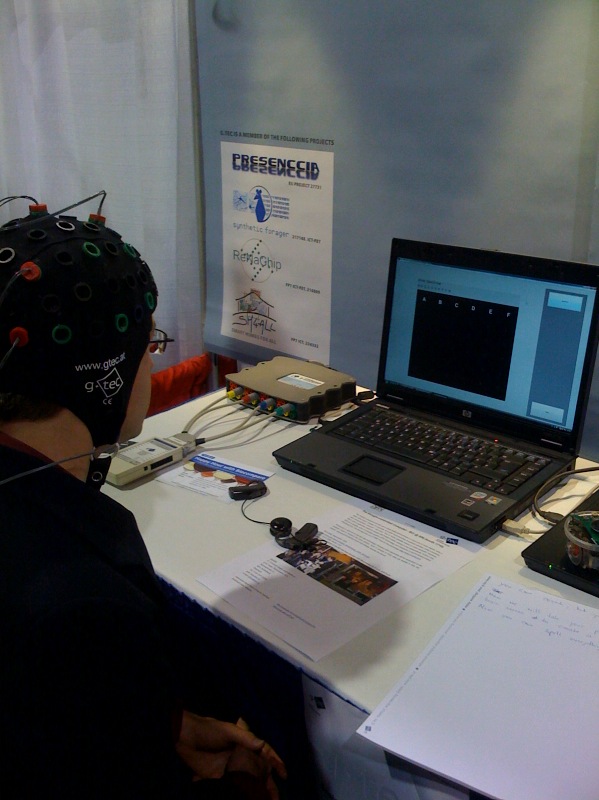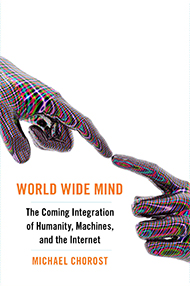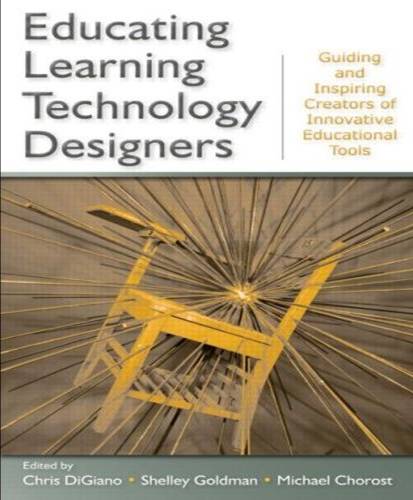Wired’s just published my latest article, Powered by Photons, in its November 2009 issue. This article is about the emerging technology of optogenetics, which allows neuroscientists to stimulate genetically altered neurons in the brain by cell type. It’s a much more precise technology than electricity, and it can be used both to detect and control neural activity. It opens up, for the first time, the possibility of two-way prosthetic devices where the brain both sends information to, and gets information from, the artificial body part. I visted Stanford and MIT to research this story, and it’s fascinating stuff.
recipient of a cochlear implant and author of World Wide Mind and Rebuilt: How Becoming Part Computer Made Me More Human
Just moved to Washington D.C.
I’ve been off my blog for months now, but there’s a good reason for it: I’ve been writing for Wired and working on my second book, which is due at the end of the year. Other things have been going on, too. I spent much of the spring semester writing grant applications and teaching minicourses at Gallaudet, and (as of this week) I’ve just moved permanently to Washington D.C. When my book comes out sometime in 2010, you can count that as a BIG blog entry.
Incredible video about wearable technology.
This is a fascinating video of a prototype device that projects information onto things in the world around you, like a book’s Amazon rating onto the book itself, and a person’s keywords onto their clothes. A tour de force of technological imagination. (Talk by Pattie Maes, demonstrating technology developed by Pranav Mistry.)
Questions from Steve Potter’s class
A student in Steve Potter’s class at Georgia Tech asked me, “Which character in Frank Herbert’s Dune do you most relate to? Has that changed since you got the cochlear implant?”
I would say Duncan Idaho, the ghola. There’s a passage in book 2 or 3 — I’ve looked for it several times, to no avail — where he meditates upon the fact that accepting bionic eyes from the Tleilaxu also means acquiring, to some extent, their way of viewing the world. Not just perceptually, but psychologically. The Tleilaxu had a subtle agenda of influencing the people who used their implants. Taking Tleilaxu eyes meant acquiring elements of a Tleilaxu perspective on life.
The Performance Artist of Memory.
On Wednesday and Thursday I visited Georgia Tech and Emory in Atlanta, and it was a trip full of happy surprises. I went to visit Steve Potter, who is best known for creating neural networks with living brain cells and giving them “bodies” to use and virtual worlds to explore.
It’s been powerfully argued by George Lakoff, Rodolfo Llinas, and others, that you can’t have cognition without having a body; brains and minds come into existence because bodies have to move about in the world and cope with its exigencies. This line of thinking says, “Forget about trying to create thinking machines by creating algorithms and rules.” Instead, create networks of sufficient complexity and turn them loose in a world where they need to do things to get by, and intelligence will emerge.
In which I discover podcasts.
During Gallaudet’s long winter break — with the campus empty, the gym shuttered, and the cafeteria closed — I’ve taken to walking around the athletic track for exercise. It’s boring. Around and around and around and around.
A few days ago I discovered my iPhone’s earbuds in my desk and thought, Hey! What if I stuck these in my ears?
I could do it, too, because the mikes of my implants are cleverly situated in the shell of the ear. The earbuds fit in just fine, nestled right against the mikes.
My second book is out.
So here’s my second book, just published by Routledge:
It’s titled Educating Learning Technology Designers: Guiding and Inspiring Creators of Innovative Educational Tools. It’s an edited volume, with chapters by many authors.
The book is the brainchild of Chris DiGiano, an excellent fellow with whom I worked at SRI International in Menlo Park, California. It grew out of his project on educational technology. The book was a big job; it took about three years. Chris is now at Google, and our other co-editor, Shelley Goldman, is still at Stanford.
That’s how they end up at the Genius Bar
My iPhone had a software glitch yesterday, so I took it to the Apple store in Pentagon City for expert care. While I was waiting, a young and quite cute Asian woman sat down next to me. Her iPhone’s screen was shattered.
“You dropped it?” I asked her, sympathetically.
“No,” she confessed. “I threw it.”
Two plays.
This weekend I saw two plays, Frost/Nixon at the Kennedy Center and Fences at Gallaudet’s Elstad Auditorium.
Frost/Nixon was a one-note play. It chronicled how David Frost, a lightweight talk-show host, got Nixon to confess to wrongdoing in a TV interview three years after he resigned. (Yes, this actually happened.) The play was an obvious fantasy of Bush someday doing the same and letting the country have some kind of catharsis and closure. I’m not holding my breath.
In which I type with my mind.
In that blessed future when civilization has thrown away its keyboards and people can just think what they want to do, I’ll say to the young ‘uns, “Oh, yes, I first did it that way back in 2008, when you had to wear funny caps and do it one letter at a time.”

|
This was at the Society for Neuroscience’s conference here in Washington DC (for those of you just getting on this blog, I’m spending the year here as a visiting professor.) I’d seen g.tec demonstrate the technology the night before, and I was eager to try it myself.

Recent Posts
- Getting insurance coverage for new cochlear implant processors
- Review of Lydia Denworth’s “I Can Hear You Whisper: An Intimate Journey through the Science of Sound and Language”
- Unruly Electronics (or, Week Nine on New Processors)
- Update: Week Three with Naída CI Q70 Processors
- First Look: The Naída CI Q70, a new cochlear implant processor.
Recent Comments
- Michael Chorost on Why doesn’t a sneeze blow the electrode array out of the ear?
- Sanjay Gaikwad on Getting insurance coverage for new cochlear implant processors
- Mark H on Getting insurance coverage for new cochlear implant processors
- gari on Getting insurance coverage for new cochlear implant processors
- Dottie Kowalik on Why doesn’t a sneeze blow the electrode array out of the ear?
Archives
Copyright © 2024 Michael Chorost
